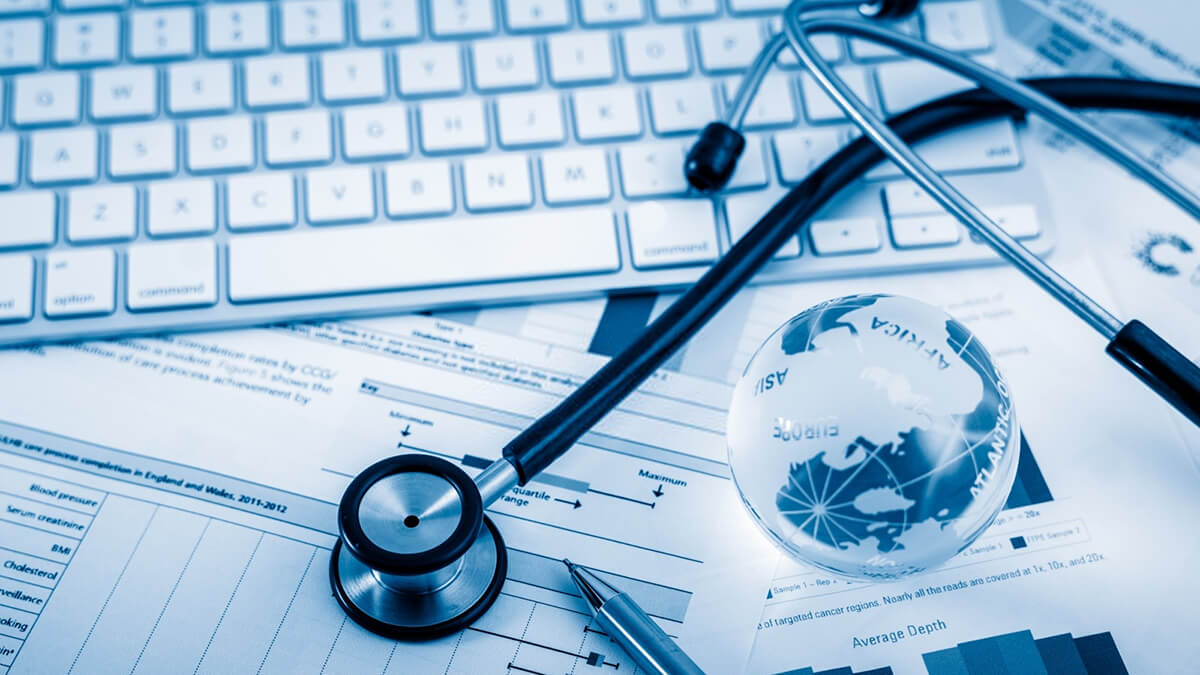Why Medical Administration is Necessary for Smooth Healthcare Procedures
Why Medical Administration is Necessary for Smooth Healthcare Procedures
Blog Article
Best Practices in Medical Administration for Improving Efficiency and Lowering Prices
In the ever-evolving landscape of health care, the pursuit of best techniques in medical management is extremely important for improving efficiency and suppressing costs. By incorporating sophisticated technologies such as digital health documents and telemedicine, doctor can simplify procedures and boost individual treatment. Modern technology alone is not a remedy; maximizing source appropriation and promoting collective communication among care groups are just as vital. As companies strive to balance quality and price, what strategies should be focused on to accomplish these double objectives? The solution to these concerns hold the key to a more lasting health care system.
Leveraging Advanced Technology
The integration of electronic options into health care systems has actually changed the method facilities operate, simplifying processes and improving client care. By centralizing patient details, EHRs get rid of the demand for cumbersome documents and promote seamless interaction amongst medical care providers.
Telemedicine is another technological improvement that has changed individual interaction. It offers benefit for both individuals and healthcare specialists by allowing remote consultations, which can lower the requirement for in-person check outs and enhance visit organizing. Additionally, telehealth platforms can prolong health care accessibility to country or underserved locations, connecting gaps in treatment shipment.
Furthermore, making use of Expert system (AI) and artificial intelligence is coming to be increasingly common in predictive analytics, enabling for very early detection of prospective health concerns and more enlightened decision-making. These innovations, when incorporated efficiently, can enhance diagnostic accuracy and customize patient treatment plans, eventually bring about boosted medical care results and functional effectiveness.
Optimizing Resource Allotment
Reliable resource allotment is crucial for making best use of the effectiveness of clinical management. By purposefully taking care of sources such as personnel, equipment, and funds, health care centers can significantly enhance their operational efficiency, improve client end results, and minimize unneeded expenses. The initial step in enhancing resource appropriation entails conducting a detailed evaluation of current properties and recognizing locations where sources might be underutilized or exhausted. This evaluation ought to be data-driven, using metrics and analytics to educate decision-making processes.
Prioritizing resource appropriation based on individual demands and solution demands is crucial. This includes straightening sources with high-demand locations, such as emergency care or specialized treatments, to guarantee timely and efficient individual care. Carrying out versatile staffing models can likewise optimize labor sources by adjusting workers allocation in reaction to changing patient volumes. Additionally, accepting telemedicine and various other technical remedies can minimize physical source restraints by supplying alternate methods for patient-provider communications.
Monetary sources should be carefully kept track of and allocated with critical foresight to support both temporary operational needs and long-term institutional objectives. This includes investing in training programs that enhance personnel competencies and embracing energy-efficient practices that lower functional expenses (medical administration). Inevitably, a maximized source allocation strategy promotes a sustainable medical care environment that is receptive, effective, and financially prudent
Streamlining Process Procedures
When medical care facilities aim to improve functional effectiveness, enhancing operations procedures comes to be a crucial emphasis. Reliable workflows reduce redundancy, remove unnecessary steps, and enhance coordination among medical care specialists. This strategy not just increases solution distribution however also boosts the high quality of client treatment.

Following, technology assimilation plays a significant role in enhancing workflows. Applying digital health records (EHRs) and computerized physician order access (CPOE) systems minimizes documentation, reduces human error, and makes certain information comes to all pertinent employees. Furthermore, leveraging telemedicine systems can improve individual appointments and follow-ups, decreasing the pressure on physical framework.

Ultimately, structured operations cause cost decreases and enhanced patient complete satisfaction, fostering a more lasting health care setting.
Enhancing Data Management
Structure upon streamlined process, enhancing data administration ends up being an important part beforehand health care management. Effective information management systems are critical for maintaining precise client documents, improving decision-making, and guaranteeing conformity with regulative requirements. By applying durable data monitoring services, medical care facilities can enhance the top quality of person treatment while at the same time minimizing functional costs.
One trick facet of improving information administration is the assimilation of sophisticated digital health and wellness document (EHR) systems. These systems promote the smooth exchange of individual info across various departments, decreasing replication of informative post tests and minimizing mistakes. A well-designed EHR system sustains data analytics, enabling doctor to determine fads and make notified choices pertaining to person treatment.
Moreover, protecting individual information is extremely important. Taking on thorough cybersecurity measures, including encryption and routine audits, makes certain the integrity and discretion of delicate details. This not just protects clients yet likewise keeps the establishment's credibility.
Purchasing team training is another crucial variable. Educating medical care specialists on information administration methods enhances their capacity to effectively use innovation, bring about improved client outcomes. In verdict, enhancing data administration via advanced modern technology and extensive training is necessary for accomplishing effectiveness and expense reduction in clinical management.
Fostering Collaborative Interaction
An important part ahead of time clinical administration is cultivating collective interaction among healthcare specialists. Efficient communication is critical for making sure smooth client care, maximizing treatment outcomes, and minimizing errors. By encouraging visit the website open discussion and coordination across multidisciplinary groups, medical care companies can enhance their operational efficiency and lower unnecessary costs.
Central to this strategy is the assimilation of communication innovations such as electronic wellness records (EHRs) and secure messaging platforms, which promote the rapid exchange of critical patient info. These devices allow doctor to gain access to and see here share information in genuine time, guaranteeing that all team participants are notified and aligned in their decision-making procedures. Moreover, regular group conferences and interdisciplinary rounds can further promote a culture of cooperation and responsibility.
Training programs focused on boosting interaction abilities are likewise necessary. Inevitably, fostering joint interaction leads to improved healthcare shipment and cost savings.

Final Thought
Incorporating sophisticated technology, such as digital health records and telemedicine, together with optimized source appropriation and streamlined operations processes, is vital for enhancing effectiveness in medical management. Efficient data monitoring and cultivating collective interaction amongst healthcare teams are crucial for minimizing redundancies and improving treatment high quality. By prioritizing precautionary care and participating in quality enhancement initiatives, healthcare companies can achieve significant cost savings and improved client end results, consequently making certain sustainable medical care shipment in a progressively intricate environment.
Report this page